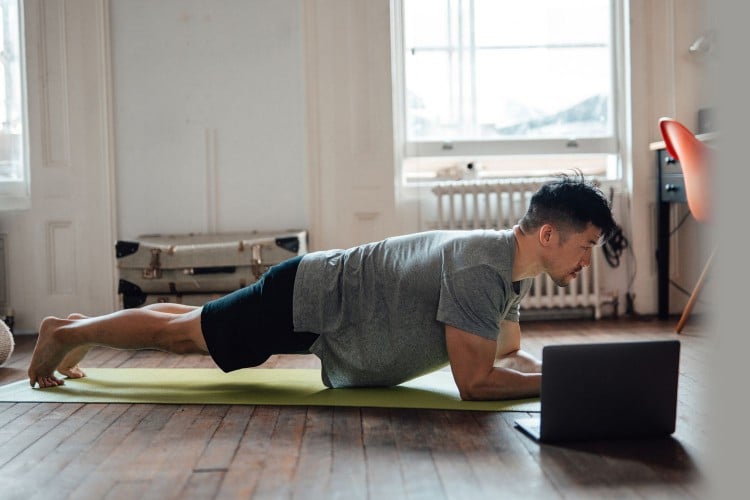Best Exercises to Lower Blood Pressure
- New research found that strength training exercises can be more effective at lowering blood pressure compared to other styles of exercise.
- Isometric movements, like wall sits and planks, were noted as the best form of strength training to lower blood pressure.
- Experts recommend creating a sustainable exercise routine that includes both aerobic exercises and strength training in order to see the most benefits.
Strength training is more effective at lowering blood pressure than other styles of exercise, a new study finds.
It has long been known that exercise can help reduce blood pressure, and can be an important component of managing hypertension. However, most research has focused on the benefits of aerobic exercise—like walking and running—to reduce blood pressure.
But, it’s not just cardio workouts that can be helpful for blood pressure management.
A new study, published in July in the British Journal of Sports Medicine, found that strength training exercises are more effective at lowering blood pressure than other forms of exercise.
The new research suggests that strength exercises, particularly those considered isometric exercises like planks and wall sits are better at lowering blood pressure than other types of exercises.
“Isometric exercises increase the heart rate, lower cardiac output, and alter systemic vascular resistance via various musculoskeletal receptors,” said Nitin Bhatnagar, DO, a cardiologist, human behavioral specialist, CrossFit coach, and life architect at Hampden and Franklin County Cardiovascular Associates in Massachusetts.
He explained that, over time, this conditions the cardiovascular system and lowers blood pressure.
“This gives further proof that exercise is a critical component of controlling our blood pressure, in addition to medication if that is what is recommended by your doctor,” said Lance LaMotte, MD, FACC, a structural and interventional cardiologist and the owner of TITLE Boxing Club in Baton Rouge, Louisiana.

Getty Images / Oscar Wong
The Limitations of the Study
LaMotte noted that since the new research is a meta-analysis (an analysis of several trials), there is room for critique of the certainty of the findings. “As licensed practitioners, we rely on meta-analyses a little less for absolute results,” he said.
Exercise Reduces the Stiffness of Blood Vessels, Which Lowers Blood Pressure
From a broad perspective, exercise helps blood pressure by reducing the stiffness of the blood vessels. This makes the blood vessels more “compliant” or extensible and able to dilate or widen, making more “room” for blood to flow through.
This decreases the pressure exerted by the blood on the arterial walls.
Bhatnagar explained that blood vessels have three layers of tissue that comprise the walls of the vessels. The innermost layer is known as the endothelial layer; exercise has been shown to influence the activity of the endothelium.
The endothelial cells release nitric oxide, which helps widen the blood vessels.
“[Nitric oxide] also relaxes the artery wall’s smooth muscle cells, preventing spasms, and keeps the vessels patent,” Bhatnagar said. “Regular exercise helps the arteries by increasing nitric oxide production.”
He explained that because of the widening of the blood vessels, blood pressure is lowered.
Consistent exercise also helps lower blood pressure because of how it strengthens the heart muscle, Bhatnagar added. This allows the heart to pump blood more efficiently, which reduces stress on the blood vessels.
What Is a Healthy Blood Pressure in Adults?
According to the American Heart Association, a blood pressure reading below 120/80 mm Hg (millimeters of mercury) is considered within the normal range for a healthy adult.
Most People Don't Know What a Normal or Healthy Blood Pressure Is, Study Shows
Creating a Balanced Exercise Routine for Blood Pressure
Even though the new research points to the benefits of strength training for blood pressure, Bhatnagar clarified that it’s important for an exercise routine to include all forms of exercise in order to provide a full range of benefits to the body.
“Strength training is just as crucial as aerobic training, which is equally vital to yoga and stretching,” he said. “Each discipline plays a role in the body’s development and conditioning to balance strength, endurance, stamina, coordination, flexibility, speed, agility, and functionality.”
Ultimately, it’s important to find a sustainable exercise routine that you can stick with—that’s when you’ll start to see results.
“The most important thing is to find an exercise that you are going to do at least 3 or 4 times a week,”Allan Stewart, MD, a cardiologist and the chairman of surgery and medical director of the Cardiovascular Institute at HCA Florida told Health. “If you are someone that doesn’t like strength exercises, and likes to, say, swim, walk, or hike, those are fine as well.”
LaMotte agreed that liking the kind of exercise you’re doing will help with consistency, which is, in his opinion, more important than choosing a specific kind of physical activity.
“Make sure you choose something that you enjoy doing and can commit to long-term,” he said. “That’s where I see people fall off—when they choose an activity they can’t adhere to.”
That said, Stewart, LaMotte, and Bhatnagar agree that you certainly shouldn’t negate strength training.
“The reason why we have joint, posture problems, and disc disease is because we’re not doing strength training over time,” Stewart said. “Strength training will lead to better posture and a lower heart rate. It will also decrease stress, decrease arthritis, improve posture, and decrease spinal disease, among the many benefits.”
Before you begin any exercise program, particularly if you struggle with high blood pressure, Stewart noted that it’s important to speak to a healthcare professional.
But, once you’ve decided on the right exercise path for you, it can yield impactful results.
“We are far better off with exercise than blood pressure medicine,” said Stewart. “It’s not to say there aren’t people who need it, but [focus on] controlling your diet, controlling your stress, getting proper sleep and exercise.”
13 Effective Ways to Lower Your Blood Pressure

Comments on "Best Exercises to Lower Blood Pressure" :